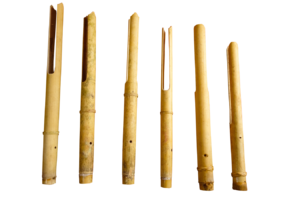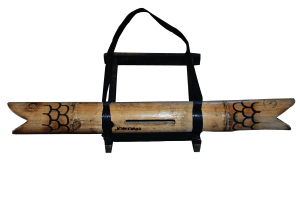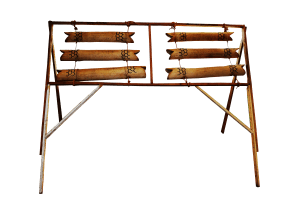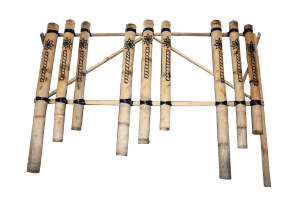
Kulilit
ulilit is made by splitting a bamboo tube in half and carving ridges on it. A scratching sound is produced

ulilit is made by splitting a bamboo tube in half and carving ridges on it. A scratching sound is produced

It is a six-piece percussion instrument made from carving two separate thin walls or tongue on the top part of

Ullibyew is a jews harp that usually measures 8-9 inches long. This is made from any part of a well

Single cut node either from mid or bottom of the bamboo culm measure 28-30 inches. In the middle, a rectangular

Two sets of percussion instruments made into three different culm sizes such as 26, 28 and 30 inches. Each node

Similar to hagubhob, the halo is shorter. The longest pipe measures 48 inches or equivalent to 4 nodes of the

The longest instrument made from the bottom to the top part of the culm. The longest pipe is approximately 62

The culm is cut from bottom to top for about 180 cm long or most likely equivalent to 4 nodes.

The marimba bars are made from dried bamboo with aluminum/metal tube resonators.

The rattle tubes are made from the nodes of Batibot bamboo, which is attached to a bamboo frame made from
The DOST-FPRDI has a Bamboo Musical Instruments Innovation R&D program aimed at improving the quality of locally-made bamboo musical instruments (BMIs) through science and innovative technologies. The program seeks to standardize the production of selected BMIs, develop prototype designs, analyze raw material sources and existing markets, and build a BMI processing facility. In addition, the program aims to document the ethnocultural story behind several BMIs and identify the bamboo species used in BMI production to promote public awareness and appreciation of the cultural importance of these musical instruments. The program is a collaboration with the University of the Philippines and Philippine Normal University for teaching modules and analyzing sound quality and standardization of BMI design. The DOST Grants-in-Aid program provides funding.
PhBMI